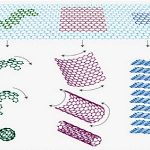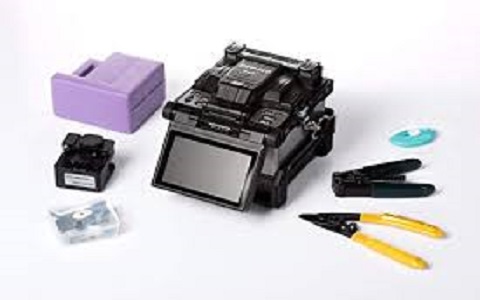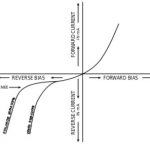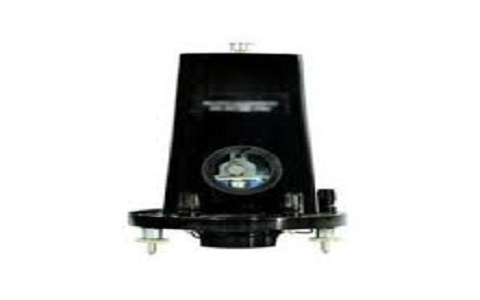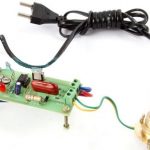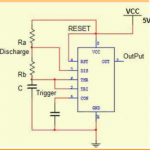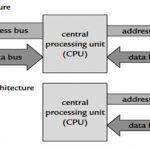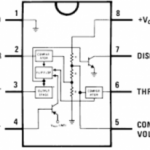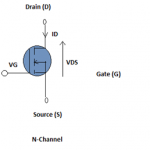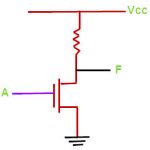Nanotechnology is the most common term which deals with nanoscale materials. This technology is to make use of minute objects. The property of the materials changes when the bulk is split into small sizes. The nanoscale materials possess unique properties in the fields of electronic, optical or mechanical, etc...Even in ancient days, these materials are used as dyes in ceramics. The insulators at the molecular stages can behave as conductors at this nanoscale. The behavior of the nanomaterials … [Read more...]
What is a Splicing of Optical Fibers : Requirements & Its Techniques
Splicing of optical fibers is a fundamental method to connect two optical fibers permanently. Since the optical fibers are laid for long distances, which may even go up to hundreds of kilometers, it is not possible to lay a single line for such along with distance. Hence it becomes necessary to join two cables at certain points to increase the span of the cable. A lot of care is taken in splicing the fiber cables. It must be noted that, while joining the cables, no discontinuity should arrive in … [Read more...]
Types of Break Down Diodes and Its Applications
The break down diode is an electronic component with two electrodes called as the anode and the cathode. Most of the diode is made up of semiconductor materials such as silicon, germanium etc. The fundamental property of a diode is to conduct electric current in only one direction and blocks the current that flows in the opposite direction. When the cathode is negative charge related to the anode at a voltage greater than minimum called as forward breaker, then the current flows through the … [Read more...]
What is a Ballistic Galvanometer : Construction & Its Working
A ballistic galvanometer is an instrument, which is used to measure or indicates current in a closed circuit. The galvanometer also is known as the PMMC instrument, works on the principle of permanent magnet moving coil. The force is generated on the coil, due to Lorentz Force Law. Due to the interaction of fluxes, the pointer in the meter is deflected. Once the pointer is deflected, different torques are exerted on the pointer to make the pointer stop at its steady-state position. The different … [Read more...]
Light Sensor Circuit Diagram with Working Operation
The controlling of street lights, make a light sensor circuit outdoor lights, a few indoor home appliances, and so on are usually maintained and operated manually on several occasions. This is not only risky but also results in wastage of power with the negligence of personnel or unusual circumstances in controlling these electrical appliances on and off. Hence, (based on the requirement) we can utilize the light sensor circuit for automatic switching of the loads based on daylight's intensity … [Read more...]
What is 555 Timer IC – Working with Operating Modes
The IC 555 timer was invented by “Signetic Corporation” and it was termed as SE or NE555 timer. Generally, it is a monolithic timing circuit that gives precise and highly stable delays of time or oscillation. These types of ICs are very cheap and reliable in cost when we compared with the OP-Amp applications in the same areas. These ICs are used as an astable and monostable multivibrators in digital logic probes, DC-DC converters, tachometers, analog frequency meters, voltage regulators, … [Read more...]
Difference Between Von Neumann and Harvard Architecture?
In present days, the audio & video is totally digitized. When the audio signal is out of any audio source or microphone, then the analog will be sampled, coded, modulated, compressed & processed into the digital form like zero’s and one’s, so it is named DSP (Digital Signal Processing). The remaking of digital signal into the audio signal is done by digital signal processing. The architecture of traditional X86 is called “Von Neumann”, and it is not suitable for handling several … [Read more...]
Difference Between Electronic Devices and Integrated Circuit
An electronic device is constructed as a single unit. Any circuit or a system can produce the desired output based on the input. Electronic devices and integrated circuits are the components for controlling the electrical current flow for the purpose of signal processing and system control. Before the invention of integrated circuits (ICs), all the individual electronic devices like the transistor, diodes were discrete in nature. All the individual electronic devices are called discrete … [Read more...]
Difference Between BJT and MOSFET
Both the BJT and the MOSFET come under the category of semiconductors. This type of devices produces large variations in the electrical signals due to the changes in the applied input signals. The transistors are the revolutionary devices; its invention in the 20th century has bought changes in the electronic systems. These also facilitate to act like switches as well as it can also be used in amplifiers. The basic type in the transistor that introduced earlier is BJT later MOSFET is introduced … [Read more...]
Difference Between CMOS and NMOS Technology
The most popular semiconductor technology (MOSFET technology) obtainable today is the CMOS technology. The term CMOS stands for complementary MOS technology. This is the most important semiconductor technology for ASICs, microprocessors, memories, etc. The main benefit of CMOS technology over NMOS and Bipolar technology is the power dissipation – when the circuit activates then only the power dissipates. This allows fitting several CMOS gates on an IC (integrated circuit) than in Bipolar & … [Read more...]
- « Previous Page
- 1
- …
- 14
- 15
- 16
- 17
- 18
- …
- 23
- Next Page »
